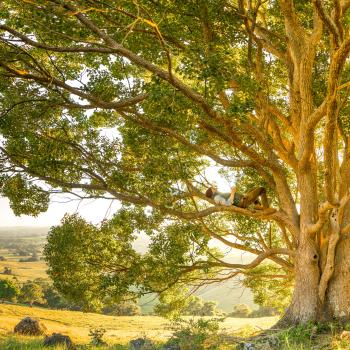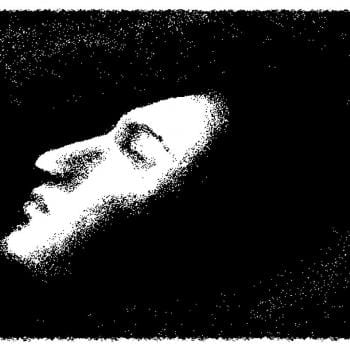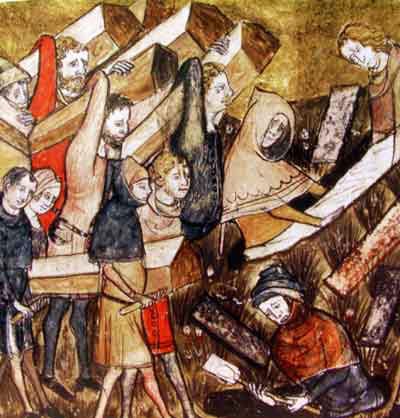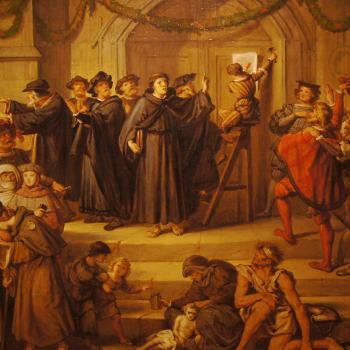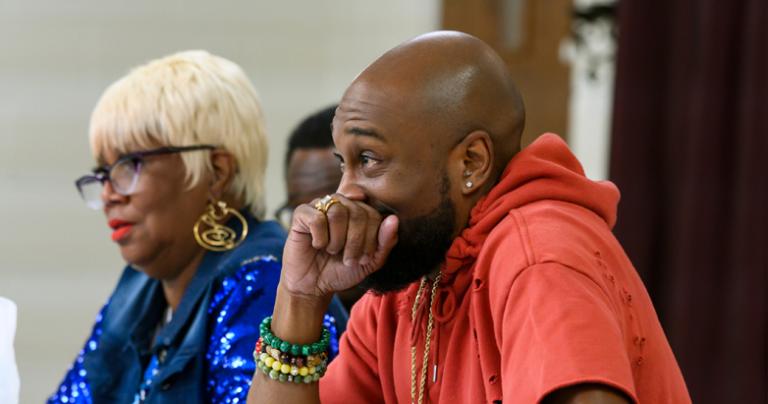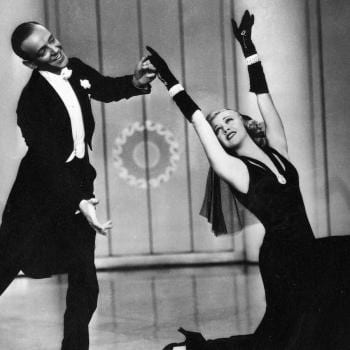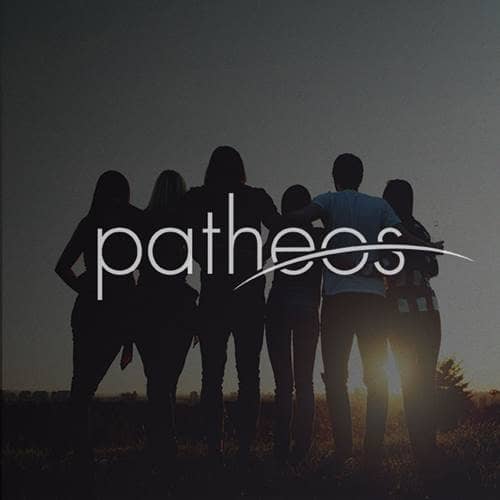- Trending:
- Forgiveness
- |
- Resurrection
- |
- Joy
- |
- Afterlife
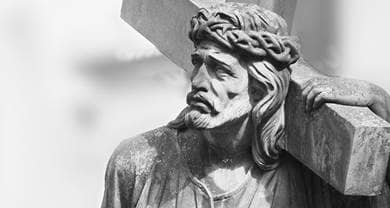
RELIGION LIBRARY
Christianity
Symbolism
 Numerous signs and symbols, many of them associated with worship, have developed over the two thousand years of Christianity. The most immediately recognizable Christian symbol is the cross, a simple pictorial representation of the wooden structure upon which Jesus was crucified. A number of variations of this symbol can be seen in churches and art, and on jewelry and other objects used in daily life. The most common variations are the Latin cross, the Greek cross, and the crucifix, which is a cross that depicts the body of the suffering Christ. Roman Catholic and Orthodox Christians, and some Anglicans, and Lutherans make the "sign of the cross" in prayer. This sign is a gesture in which the believer uses the fingers of the right hand to touch (in varying sequence) the forehead, chest, and each shoulder while saying, "In the name of the Father, the Son, and the Holy Spirit." It is an act of faith in the Trinity.
Numerous signs and symbols, many of them associated with worship, have developed over the two thousand years of Christianity. The most immediately recognizable Christian symbol is the cross, a simple pictorial representation of the wooden structure upon which Jesus was crucified. A number of variations of this symbol can be seen in churches and art, and on jewelry and other objects used in daily life. The most common variations are the Latin cross, the Greek cross, and the crucifix, which is a cross that depicts the body of the suffering Christ. Roman Catholic and Orthodox Christians, and some Anglicans, and Lutherans make the "sign of the cross" in prayer. This sign is a gesture in which the believer uses the fingers of the right hand to touch (in varying sequence) the forehead, chest, and each shoulder while saying, "In the name of the Father, the Son, and the Holy Spirit." It is an act of faith in the Trinity.
 Upon entering and leaving a church, Catholics and some Anglicans genuflect, or bend the right knee in acknowledgment of the sacredness of the altar. Many Christians often pray on their knees as a sign of devotion and humility.
Upon entering and leaving a church, Catholics and some Anglicans genuflect, or bend the right knee in acknowledgment of the sacredness of the altar. Many Christians often pray on their knees as a sign of devotion and humility.
In "high" or liturgical churches, holy water, which is water blessed by a priest, is widely used in a variety of rituals, such as baptism. An all-purpose instrument for the blessing of people and objects, holy water is used, for example, in the blessing of a congregation, the blessing of a casket before burial,  or the blessing of a new home. When entering a church, Roman Catholics and Anglicans dip their fingers in holy water and then make the sign of the cross.
or the blessing of a new home. When entering a church, Roman Catholics and Anglicans dip their fingers in holy water and then make the sign of the cross.
An ancient symbol of healing, oil is used in blessings as a symbol of health, as well as in the anointing of the sick. Ashes are applied to the forehead on Ash Wednesday, the beginning of Lent, to symbolize the inevitability of death. Incense is burned to purify thoughts and to symbolize prayer and reverence. Lighted candles symbolize new understanding.
 Statues and pictures of Jesus, his mother Mary, the angels, and the saints are very common, especially in the liturgical traditions. Many of the statues of angels and saints have special symbols for identification. For example, depictions of the apostle Andrew will include an X-shaped cross, the shape of the cross on which Christians believe Andrew was crucified. In the Orthodox Church, icons are highly stylized, two-dimensional images of Jesus, Mary, and the saints. Icons have a distinctive theology. They are considered holy in and of themselves, though not to be worshipped. They are far more than merely pictures painted on wood. They are "windows" into the heavenly realm.
Statues and pictures of Jesus, his mother Mary, the angels, and the saints are very common, especially in the liturgical traditions. Many of the statues of angels and saints have special symbols for identification. For example, depictions of the apostle Andrew will include an X-shaped cross, the shape of the cross on which Christians believe Andrew was crucified. In the Orthodox Church, icons are highly stylized, two-dimensional images of Jesus, Mary, and the saints. Icons have a distinctive theology. They are considered holy in and of themselves, though not to be worshipped. They are far more than merely pictures painted on wood. They are "windows" into the heavenly realm.  The image of the saint is considered a conduit, able to both receive the prayers and petitions addressed to that saint, and transmit the saint's blessing to the supplicant.
The image of the saint is considered a conduit, able to both receive the prayers and petitions addressed to that saint, and transmit the saint's blessing to the supplicant.
The fish is an ancient symbol of Christianity, expressing Jesus' desire that his followers become "fishers of men" (Luke 5:10). It is also a representation of the Greek word ichthus, "fish." Ichthus is an acronym for the Greek Iesous Christos Theou Uios Soter, or "Jesus Christ, Son of God, Savior." In this way, the fish is a symbol of Jesus.
Iesous Christos Theou Uios Soter, or "Jesus Christ, Son of God, Savior." In this way, the fish is a symbol of Jesus.
Letters from the Greek alphabet often appear in Christian art. The first and last letters of the alphabet, Alpha and Omega, symbolize Jesus as the beginning and the end of all things. This designation appears three times in the Book of Revelation. In Revelation 22:13, we read, "I am the Alpha and the Omega, the First and the Last, the Beginning and the End." The logo IHS is an acronym of the  Greek letters iota, eta, and sigma, which are the first three letters of the name Jesus. The logo XP represents the first two letters of the name Christ in Greek, chi and ro. It is usually written as a single image and called the chi-ro.
Greek letters iota, eta, and sigma, which are the first three letters of the name Jesus. The logo XP represents the first two letters of the name Christ in Greek, chi and ro. It is usually written as a single image and called the chi-ro.
The structural parts of church buildings, the stained glass, illuminated manuscripts, music, and clothes worn by ministers are all rich sources of Christian symbolism that vary widely between traditions. A fuller discussion of the symbolism of the different Christian denominations will be found in the articles concerning those traditions.


Study Questions:
1. Why is the cross most often associated with Christianity?
2. How is posture associated with prayer? What does this symbolize?
3. How are icons used within Christianity?
4. How is the Greek language used within Christian symbolism? What is the most common symbol?


